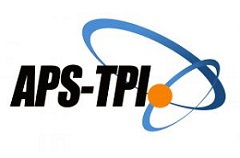Development of Online-Based Digital Learning Media for Geography Subjects at Madrasah Aliyah Negeri I Wonosobo
Abstract
Nowadays, learning media is growing in line with the rapid development of information technology. This research was conducted in connection with the need for learning media that can be used anywhere and anytime without any limitation of place and time. This study aims to develop online learning media products for geography learning. The research method used was the Research and Development (R&D) method. The research subjects were students of class X Madrasah Aliyah Negeri 1 Wonosobo. Data collection techniques used the methods of observation, interviews, questionnaires, and documentation. Questionnaires were employed to determine the feasibility of online-based learning media, whereas data analysis techniques utilized percentage techniques. From the study results, it can be concluded that the online-based learning media developed can be said to be good by experts. It can be seen from the testing results on students to determine the level of media feasibility based on predetermined criteria/indicators. Thus, this learning media deserves to be used as an alternative learning media with a good category (88%), namely with details on educational criteria with good results (93%), appearance criteria with good results (85%), and technical criteria with good results (89%). Hence, online-based learning media for geography class X is feasible to use as a choice of digital learning media.
Keywords
Full Text:
PDFReferences
Artini, N. S., & Astawa, I. B. M. (2019). Studi tentang komponen pembelajaran geografi sma/ma antara wilayah perkotaan dan perdesaan di kabupaten buleleng serta implikasinya terhadap hasil belajar siswa. Jurnal Pendidikan Geografi Undiksha, 7(1). https://doi.org/10.23887/jjpg.v7i1.20677
Budiarto, M. K., Rejekiningsih, T., & Sudiyanto, S. (2021). Students’ opinions on the need for interactive multimedia development for entrepreneurship learning. International Journal of Evaluation and Research in Education (IJERE), 10(4), 1290–1297. https://doi.org/http://doi.org/10.11591/ijere.v10i4.21411
Dewi, D. T. (2020). Penerapan Problem Based Learning untuk Meningkatkan Kemampuan Berpikir Kritis Siswa. Jurnal Pendidikan Ekonomi Undiksha, 12(1), 1. https://doi.org/10.23887/jjpe.v12i1.25317
Guo, T., & Jia, Q. (2016). Research on the impact of multimedia computer-based English teaching in high school. International Journal of Emerging Technologies in Learning, 11(8), 33–39. https://doi.org/10.3991/ijet.v11i08.6042
Linden, R., & OECD. (2016). Innovating Education and Educating for Innovation: The Power of Digital Technologies and Skills. In Educational Research and Innovation. https://doi.org/10.1787/9789264265097-en
Mayer, R. E. (2017). Using multimedia for e-learning. Journal of Computer Assisted Learning, 33(5), 403–423. https://doi.org/10.1111/jcal.12197
Miftah, M. (2013). Fungsi, dan Peran Media Pembelajaran Sebagai Upaya Peningkatan Kemampuan Belajar Siswa. Jurnal Kwangsan, 1(2), 95. https://doi.org/10.31800/jurnalkwangsan.v1i2.7
Misir, H. (2018). Digital Literacies and Interactive Multimedia-. International Online Journal of Education and Teaching (IOJET), 5, 514–523. http://iojet.org/index.php/IOJET/article/view/178/250
Mukharomah, C. F., Fitri, A. A., Nugraha, A. S., Zidan, F., Amanda, F. O., Sari, M. P., & Azizah, N. N. (2020). Adaptasi siswa sma n 1 surakarta dalam pembelajaran geografi di tengah wabah covid-19. IJTIMAIYA: Journal of Social Science Teaching, 4(2). https://doi.org/10.21043/ji.v4i2.7794
Piriyasurawong, P. (2019). Active learning using ARCS motivation on social cloud model to enhance communication skills in foreign language. TEM Journal, 8(1), 290–297. https://doi.org/10.18421/TEM81-40
Pujawan, K. A. H. (2019). Pengembangan multimedia interaktif berbasis video tutorial pada mata kuliah multimedia i (design grafis) di politeknik ganesha guru. Journal of Education Technology, 2(1), 61. https://doi.org/10.23887/jet.v2i1.13810
Roemintoyo, & Budiarto, M. K. (2021). Flipbook as Innovation of Digital Learning Media : Preparing Education for Facing and Facilitating 21st Century Learning. Journal of Education Technology, 5, 8–13.
Roemintoyo, R., Miyono, N., Murniati, N. A. N., & Budiarto, M. K. (2022). Optimising the utilisation of computer-based technology through interactive multimedia for entrepreneurship learning. Cypriot Journal of Educational Sciences, 17(1), 105–119. https://doi.org/10.18844/cjes.v17i1.6686
ROY, A. (2019). Technology in teaching and learning. International Journal of Innovation Education and Research, 7(4), 414–422. https://doi.org/10.31686/ijier.Vol7.Iss4.1433
Sanaky, H. A. H. (2013). Media Pembelajaran Interaktif-Inovatif. In Kaukaba Dipantara.
Sugandi, D. (2015). Pembelajaran Geografi sebagai Salah Satu Dasar Pembentukan Karakter Bangsa. Sosio Humanika, 8(2).
Sugiyono. (2018). Metode penelitian kuatintatif , kualitatif dan R & D. In Bandung: Alfabeta.
Tafonao, T. (2018). Peranan Media Pembelajaran Dalam Meningkatkan Minat Belajar Mahasiswa. Jurnal Komunikasi Pendidikan, 2(2), 103. https://doi.org/10.32585/jkp.v2i2.113
Thaariq, A. (2020). The Use of Social Media as Learning Resources to Support the New Normal Zahid Zufar At Thaariq, 1. Teknodika, 18(2), 80–93.
Trianto. (2010). Model Pembelajaran Terpadu. Jakarta: Bumi Aksara.
Refbacks
- There are currently no refbacks.





.png)













